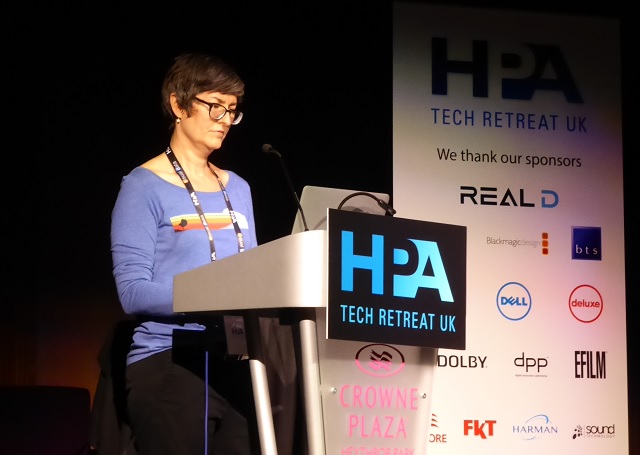 The Hollywood Post Alliance Tech Retreat, co-organised by SMPTE, is dedicated to the technologies of film production. This year, for the first time, an edition of the event was held in the UK, in the cultivated wilderness of Heythrop Park in Oxfordshire – a convenient 20 minutes from your reporter’s home!
The Hollywood Post Alliance Tech Retreat, co-organised by SMPTE, is dedicated to the technologies of film production. This year, for the first time, an edition of the event was held in the UK, in the cultivated wilderness of Heythrop Park in Oxfordshire – a convenient 20 minutes from your reporter’s home!
The first talk we attended – a supersession covering Pixar’s latest offering, “Finding Dory” – was held up by technical issues. “Is there anyone in the audience who understands technology?” the organiser quipped.
Cynthia Slavens of Pixar was the presenter. She discussed the challenges that the studio had gone through with the film. One of the characters, Hank the octopus (technically Hank the septopus, as he only has seven tentacles!) was called “The octopus that almost broke Pixar” – he has more than 4,000 animation points!
It has been 13 years since Finding Nemo was released. In this time, post-production technology has become much more robust. Higher brightness levels are possible, which is especially good for HDR and has enabled new shots and locations; for example, a scene with multiple light beams during a stingray migration, and another set in a drainage pipes.
Pixar is now in the middle of solidifying new processes and pipelines around new delivery channels, like HDR for the home. “What we are finding is that what we understand about HDR for theatrical does not necessarily translate to HDR for the home,” said Slavens. “While we love the capabilities of a 4,000-nit display, that is a unicorn – it does not exist in any consumer’s home today.” This was a reference to the prototype Dolby Vision TVs that Dolby’s partners have been showing since 2014.
Some interesting Q&A about localisation followed. For example, Pixar had to change their main character, Riley’s, hatred of broccoli in Inside Out when it was shown in Japan, because the Japanese love broccoli! Instead, she hated bell peppers.

